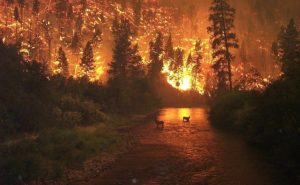(Part II of a short series)
Animals in fires suffer from direct thermal injury as well as injuries from inhalation of chemicals and particulate debris. Certainly burns to the skin are the most obvious, but burns and damage to the respiratory tract from smoke inhalation should not be underestimated. If an animal is close enough to a fire to be burned, it has experienced respiratory injury. If wildfires involve human structures, the smoke plume may contain a mixture of concentrated toxins from incinerated plastics, petroleum products, and other chemicals. The particles can cause primary toxicity and pulmonary damage; external particles on the animal could transfer and cause problems in human handlers. Proper PPE is essential. Survivors of wildfires present with complications including dehydration, starvation, and traumatic injuries.
Most respiratory injuries and thermal burns will worsen in the 2-4 days after they are acquired. However, in some cases, it can take weeks for damage to fully manifest. Treatment is highly invasive, stressful, painful, and costly. Even with gold standard care many animals will not recover enough to be released. It is therefore necessary to have clear and rigorous triage protocols, especially when faced with large scale casualties.
Working closely with a veterinarian will be essential. Burns are painful and most cases require regulated, controlled pharmaceuticals for sedation and analgesia. In addition, debridement and wound care will need to be done under anesthesia in the initial stages. Animals suffering from smoke inhalation will need oxygen therapy, nebulization, ongoing radiographs, and other diagnostic testing. Work with your veterinarian to establish protocols for victims of wildfires before you need them. Quick evaluation, euthanasia, or stabilization will be vital for the welfare of the animal when it arrives in your facility.
Key aspects of triage and treatment for the rehabilitator.
Triage and Stabilization
- Triage – “Burns covering 40-50% of the body have a high chance of mortality from sequelae (hypoproteinemia, sepsis, etc.) in domestic animals.” 1
- Burns may be classified as:
- Superficial – Some layers of epidermis still intact
- Deep – The dermis is exposed and possibly damaged
- Deep burns require advanced treatment, and may not regrow hair or feathers.
- Burns to the limbs, especially the pedal surfaces, which expose tendon/bone/joints or musculature are not compatible with release.
- Mucous membranes – Bright, cherry red gums are indicative of carbon monoxide poisoning
- Give oxygen therapy without delay.
- Eyes – Conjunctivitis, due to smoke and particulates, is not uncommon. Lids and corneas may have thermal burns.
- Flush the eyes with sterile aqueous drops
- If you have the tools and training check for corneal ulcers.
- Apply sterile ophthalmic treatments per species recommendations
- No steroids should be applied
- Ocular and respiratory damage may require euthanasia as a first option.
- Burns may be classified as:
- Restore Normothermia – Use room temperature isotonic crystalloids to restore normothermia in patients presenting with hyperthermia of fresh burns.
- Be careful not to cause hypothermia in your patient.
- Fluid Therapy – Promotes normothermia, tissue perfusion, and mitigates shock.
- An IV or IO catheter may be necessary if burns cover areas used for SQ administration.
- Analgesia – Immediately start species appropriate multimodal analgesia.
Smoke Inhalation
- Oxygen therapy is the most important aspect of treating smoke inhalation.
- Place the animal in an oxygen chamber.
- A DIY oxygen chamber can be created quite cheaply, you can find many different plans online at various price points.
- Oxygen chambers should have a thermometer and hygrometer inside to monitor and optimize temperature and humidity for your patient.
- Ensure an opening for venting of carbon dioxide.
- Place the animal in an oxygen chamber.
- Appropriate Antibiotics
-
- Chemical and bacterial pneumonia is common after smoke inhalation
- Monitor with radiographs and/or bloodwork before, during, and after starting antibiotics.
-
- Treat anxiety
- Close confinement and respiratory distress exacerbate anxiety in a wild animal, which in turn makes those conditions even worse. Tranquilization and sedation may be necessary during treatment.
- Rigorous hospital protocols must include quiet, calm, or even dark conditions with visual and auditory barriers between patients.
Burns
Once you have stabilized your patient you can begin wound management for the burns.
-
- For Superficial burns
- Clip any remaining hair. Do not remove feathers.
- Lavage away soot or debris. (Several cleaning sessions may be required)
- Apply a water based topical to the burn to increase moisture and prevent bacterial growth
- Honey, Silver Sulfadiazine (SSD), etc.
- Cover with a non-adherent (Telfa) or hydrogel bandage
- For Deep burns
- Consult with your veterinarian on a plan of action, anesthesia will be needed for debriding and cleaning.
- In the interim apply a recommended topical to the wound and cover with a non-adherent bandage.
- Be prepared for euthanasia; cleaning may reveal more damage than anticipated.
- Most burns require daily bandage changes at minimum. Your veterinarian may have suggestions to decrease invasive treatments.
- Monitor the burn. Remember, it may become worse over the next 2-4 days.
- Maintaining cleanliness of the environment, the animal, and the ICU/container is absolutely essential. Biosecurity to protect the animal from human pathogens includes all appropriate PPE and sterile techniques where applicable.
- For Superficial burns
Long-term Care
- Rehabilitation of wildfire victims takes much longer than normal rehabilitation
- Likelihood for secondary problems is very high.
- Pre-planning must include budgeting for greater than usual expenses and length of stay.
- Superficial burns to the feet may be treatable and compatible with release, but it may take months to determine.
- Singed feathers may require an entire molt cycle (up to 2 years in some species) if imping is not possible.
- There may not be an appropriate release site in the aftermath of a large fire. Pre-planning should include this eventuality.
- Long-term care should include options for supplemental feeding and water after release, especially if habitat is in recovery.
* This document does not replace information or recommendations from your veterinarian.
Works Cited:
-
-
- Macintire, Douglas K, et al. Manual of Small Animal Emergency and Critical Care Medicine. 2nd ed., John Wiley & Sons, Inc., 2012.
-
If you would like more information on Fluid Therapy, Pain Management, or Wound Management consider taking the IWRC’S ONLINE COURSES on these subjects or read about them in Wildlife Rehabilitation: A Comprehensive Approach 2nd edition.


Leave a Reply
You must be logged in to post a comment.